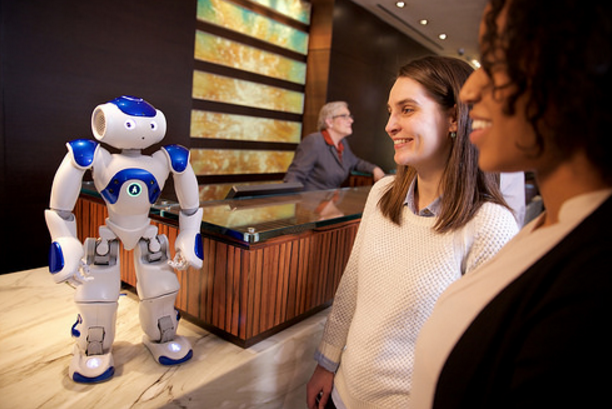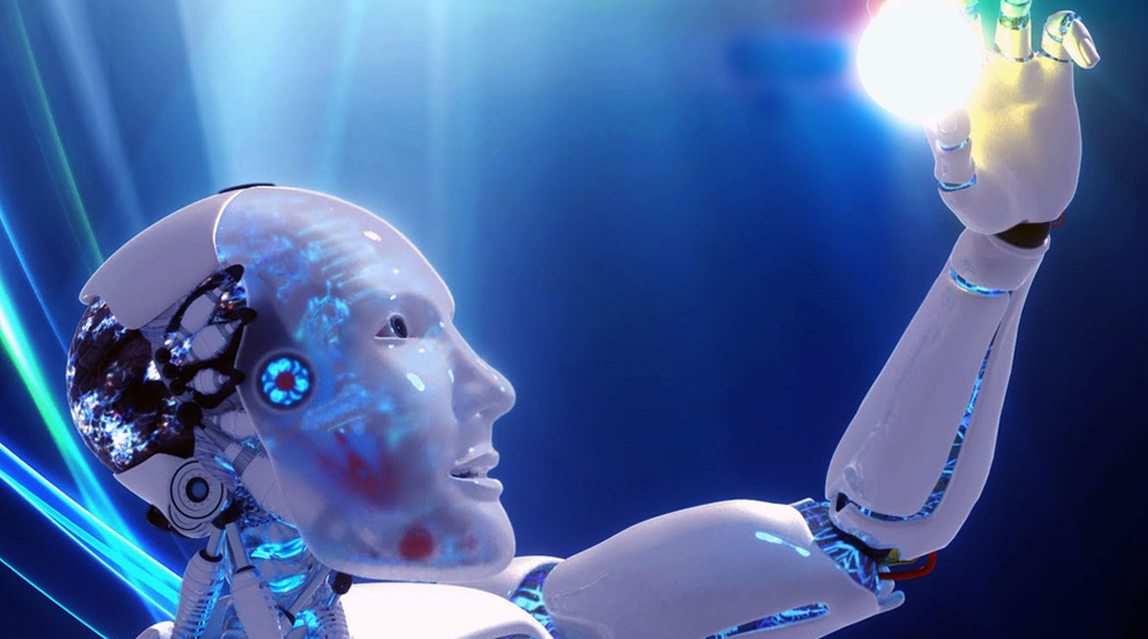
Unleashing Artificial Intelligence with Human-Assisted Machine Learning

(Lightspring/Shutterstock.com)
Artificial intelligence has never been as pervasive as it is today. From Google’s self-driving cars from to Hilton’s new Watson-powered hotel concierge, we are witnessing an explosion of AI capabilities. But while it may appear that machines are taking over, they are still tied to their human masters for one very important task: training.
“We’re in the middle of the ‘Big Bang’ moment of AI,” NVIDIA‘s Senior Product Manager Will Ramey says in the AISummit’s new ebook on the topic. “We now have the deep neural networks, the explosion of big data, and now thanks to the leap in processing power with enhanced GPUs, we have the full package to see a real shift in the development of commercial real-world AI applications.”
NVIDIA is at the center of this AI renaissance with its powerful GPUs and software tools used to harness the processors for big data and high performance computing (GPU) workloads. No fewer than 170 of the company’s GPUs powered AlphaGo, a Google (NASDAQ: GOOG) Research program designed to play the ancient Chinese board game called Go. While IBM‘s (NYSE: IBM) AI technology famously triumphed over the chess master Gary Kasparov, no computer had ever beaten a Go expert, until Google’s DeepMind system beat Fan Hui earlier this year.
The algorithms are playing ever-bigger roles in nearly every part of our lives, from politics and sports to medicine and finance. The combination of big data collection and AI-powered computation is truly ushering in a new age of human-computer interaction. Every day, computers are getting better at anticipating our needs, recommending solutions, and handling rote tasks.

Davenport and Kirby’s Three Eras of Automation
As machine surpass human achievement, it leads to inevitable questions about what jobs humans will do in a world in which machines do more and more of the work. Harvard Business Review’s Thomas H. Davenport and Julia Kirby tackle this question in a June 2015 article “Beyond Automation.”
According to Davenport and Kirby, we are entering the Third Era of Automation, which is marked by greater decision-making on the part of machines. As cognitive systems like IBM Watson increasingly make choices for people in service to them, what role does that leave knowledge workers who previously made those decisions? In contrast to the two previous eras of automation, the academics point out, there is scant “high-ground” left for humans to aspire to.
But Davenport and Kirby turn that question around. “What if, rather than asking the traditional question—What tasks currently performed by humans will soon be done more cheaply and rapidly by machines?—we ask a new one: What new feats might people achieve if they had better thinking machines to assist them?” they write.
“Instead of seeing work as a zero-sum game with machines taking an ever greater share, we might see growing possibilities for employment. We could reframe the threat of automation as an opportunity for augmentation.”
The Augmented Human
Whether you view it as machine-augmented human cognition, or human-assisted machine cognition, it comes back to one simple fact: artificial intelligence needs people.

Meet CONNIE, the new Watson-powered concierge that Hilton is testing
Even with the most powerful GPU clusters running the most advanced deep neural networks, the machine learning algorithms that underlie AI capabilities are only as good as the data that’s used to train them. That old computer science saying “garbage in, garbage out” is still valid.
“A machine learning model or artificial intelligence model is only as good as the training data,” says Matt Bencke, the CEO of Spare5, a Seattle startup that supplies companies like IBM, Pintrest, and Getty Images with human-sourced data used for machine learning models. “For the training data to be good, you need high quality with specificity of who’s providing it, at scale, and without a ton of cost or effort. If you get any one of those parameters wrong, you can’t train the model effectively.”
Spare5 is one of a growing number of outfits that’s delivering crowdsourced human insights for the sole purpose of training machines. Despite the unparalleled computational power that companies are amassing to crunch their big data, machines still lack the capability to make subjective insights the way that people can. In many respects, it’s that same cognitive quality that makes a person a person. Machines aren’t going to replicate that humanness anytime soon, which is why the machines will need people for the foreseeable future.
We’ll be training models this way for the next several decades, at the very least, says Paul Chong, director of IBM’s Watson Group
“The way we’re training systems today is focused on specific industries and roles,” Chong says in the AISummit’s ebook. “It is interesting to consider when, or if ever, a general AI engine may occur. Some academics have suggested it could be 2049, but I’d have to say it’s very difficult to predict when we might reach the idea of a singularity. I feel it’s still a long way off from where we are today.”
Domain-Specific
In the meantime, as academics and AI industry insiders debate the interaction of AI and humans, there’s no reason for organizations to hold back on their big data and AI initiatives.
“I think machine learning, artificial intelligence, augmented intelligence, cognitive computing– those are going to become a way for any company with big data to operate in the future,” Spare5’s Bencke tells Datanami. “I think everybody knows that. What they’re learning the hard way and terrified of is, they need domain-specific training data. In simple terms, that says the model is only as good as the humans who train and retrain it. Companies are really struggling with that.
Spare5 is working with IBM Watson to advanced big data algorithms used in retail, among other industries. The potential for big data to impact the retail market is substantial, and many retailers are looking to deliver more powerful search and recommendation systems, Bencke says.
“It’s one thing for a computer vision system to say that’s a red dress, but it’s quite another to say that’s a red dress appropriate for a formal professional setting,” he says. “Good luck going to your favorite retailer and typing that in. The retailer has no sense of what I’m thinking about for an outfit for an event, let alone my personal style, the weather where I work, or what the fashion trends are in my geography. Those are all very solvable big data problems, but to solve them you need domain-specific insights.”
This example illustrates the gap between how people actually think and how computers are taught to reason. The gap can be narrowed, but there’s no silver bullet. Outfits like Spare5–which has more than 10,000 users who contribute their knowledge to specific domains like interior design, golf, architecture, and fashion–will be critical to narrowing the gap.
“It’s still very much early days in terms of companies applying machine learning at scale,” Bencke says. “There are exceptions and it’s moving really fast. But I feel like Spare 5 has really got not just the luck of having a talented team, but good timing. Everywhere I go, people are treating us like the bottle of water in desert.”
Related Items:
Startups Seek Big Data Leverage with Machine Learning
Taming Unstructured Data with Cognitive Computing
Big Data Spreading Everywhere Like Air, Deloitte Says






























